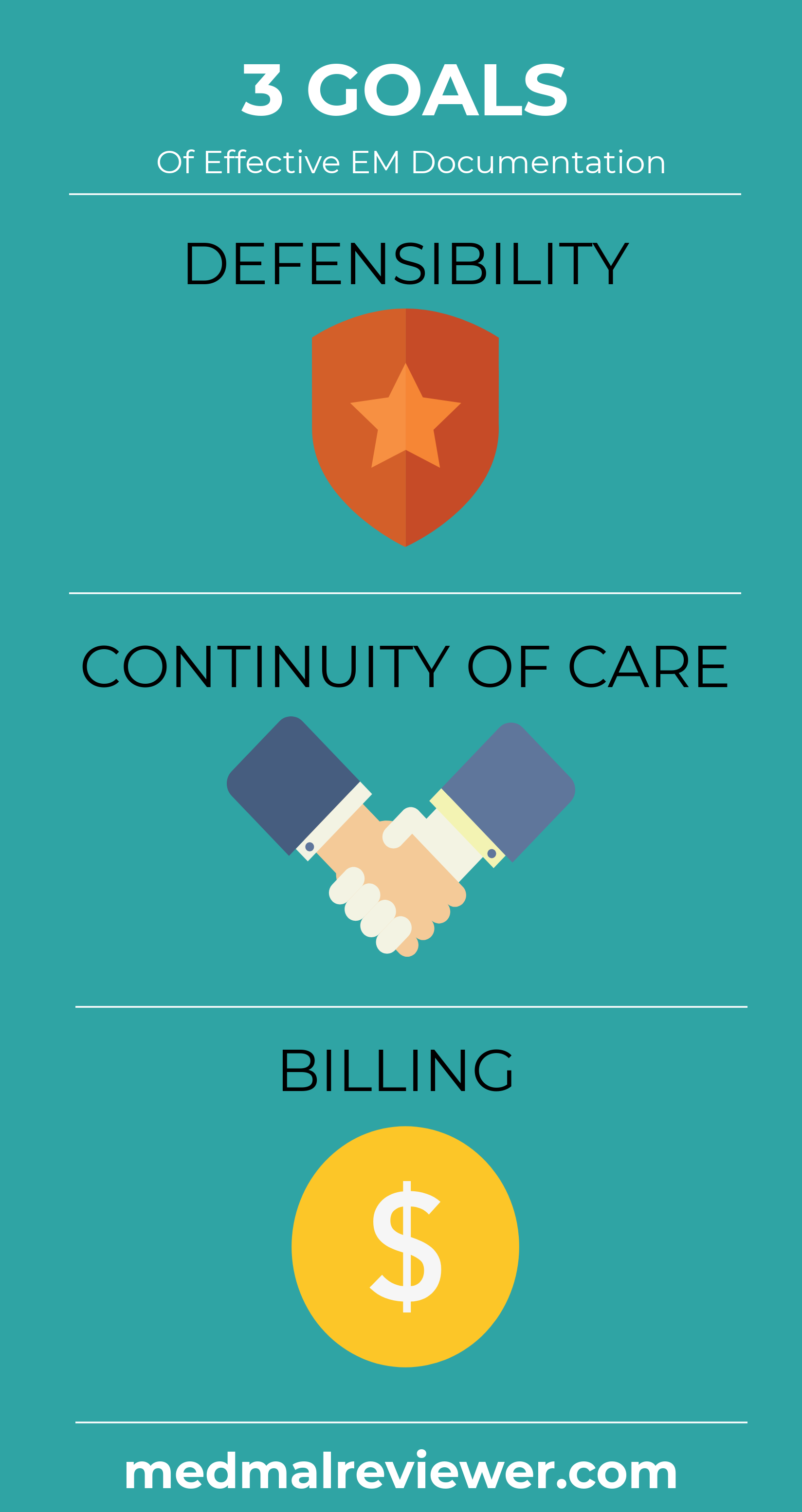The ultimate reason to document is to communicate.
While this seems like a fairly obvious statement, it has wide-ranging implications. Communication is at the core of everything we do as EM doctors: communicating with patients guides us towards a diagnosis, communicating with nurses helps us see things we missed and implement team-based care, communicating with other physicians helps us arrange the care our patients need. Many more examples exist but the implication is important: communication is everything. Without communication, we are ineffective. A wise mentor once gave me advice through the words of George Bernard Shaw: “the single biggest problem in communication is the illusion that it has taken place”.
Given that communication is the ultimate purpose of our documentation, the next logical step is to figure out with whom we are communicating. One of the first rules in writing is to know your audience. Without a basic understanding of the reader, it is very difficult for an author to communicate in an effective manner. In Emergency Medicine our writing may be closely scrutinized by audiences in 3 broad categories, all with very different intentions: legal experts, medical workers and coders. A fourth category will read our writing, researchers, but their work is best done by looking back at our work without us writing specifically for them.
Each of these groups examine your writing for very different things. This is an inherent part of the challenge of writing high-quality ED notes; you must write with multiple audiences in mind that all have different goals. Another challenge is the massive range of likelihood that these groups will look at your documentation. There is essentially a 100% chance that a coder will look at your note, a moderately high chance that another physician or other healthcare worker will read your note, and an extremely low chance that a legal expert will ever see your note.
Now that we understand the basic purpose behind all documentation (communication) and the target audiences, we can discuss the three foundational principles of good ED charting. These 3 goals are:

Understanding this trifecta is critical for understanding the purpose of this website. There are plentiful resources on billing, but the first two are less widely addressed. This website will focus primarily on improving defensibility, which has been previously under-emphasized. The term “defensive medicine” has a negative connotation, but defensive documentation (just like defensive driving) is universally beneficial.
Defensibility
In an ideal situation, no legal experts will be examining your documentation. However, in today’s medicolegal climate all charts should be written in a way that is legally defensible. The better your documentation, the less likely any lawyer will take up a case against you. Any expert witness reviewing the chart should be able to clearly follow your thought process. You don’t have to be perfect, but you do have to display clear and logical decision-making. In a worst case scenario, your chart will also be read by a judge and jury. There is an extremely small likelihood that any particular note will be read by a lay-person on a jury, but you should be aware of the fact that it is possible. You may need to defend your note outside the legal system as well, as part of peer review, a quality committee, or a morbidity and mortality conference.
Continuity of Care
It is very likely that other medical providers will read your chart as they provide ongoing care for the patient. In an ideal situation, the patient’s primary care physician will read your note in order to provide effective follow-up care. In the admitted patient, the note is important in augmenting the transition of the patient’s care to the inpatient team. Hand-offs are inherently dangerous, but effective documentation theoretically makes safe transitions more likely. This is especially true in a patient who was initially communicating but is no longer able to do so (intubation, worsening mental status, etc…). The initial history obtained in the ED may be the only history that can be obtained for quite some time.
Billing
Your documentation WILL be examined by billing/coding workers. Assuming you like to be paid for your work, your documentation will include the basic elements to be reimbursed. Most providers are invested in documenting effectively for reimbursement given the obvious financial motive. Obviously, the more a provider’s income is based on their billing (seen more in the community rather than the academic setting), the more clinicians pay attention to this area.
You now have a good understanding of the three goals of effective EM documentation (defensibility, continuity of care, and billing) and their associated audiences. The posts on this website will narrow the focus on writing notes in a way that is defensible. A simple Documentation Template has been constructed to help doctors document in a defensible yet efficient manner.
